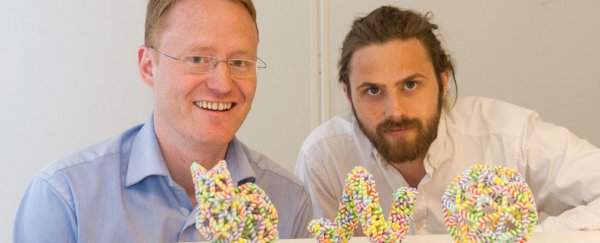A new technique to make complex 3D nanostructures from DNA could enable huge advancements in the way medical treatments are delivered at the molecular level.
Researchers at Sweden's Karolinska Institute have created a way of synthesising 3D DNA origami structures in a way that the team says is similar to the design processes used in 3D printing. In collaboration with scientists at Finland's Aalto University, the researchers' technique lets them draw polygonal objects using regular computer-aided design (CAD) software, which they can then assemble using manufactured DNA strands.
"This new method makes it very easy to design DNA nanostructures and gives more design freedom," lead researcher Björn Högberg, said in a press release. "We can now make structures that were impossible to design previously and we can do it in the same way as one might draw a 3D structure for printing out in macroscopic scale, but instead of making it out of plastic, we print it in DNA at the nanoscale."
So far the researchers have used the technique to produce nanoscale bunnies, balls, spirals, and bottles - all relatively complex shapes beyond the means of previous DNA origami techniques. While medical scientists wouldn't need molecular formations mimicking these sorts of real-world shapes in the lab, the ability to manipulate DNA forms with this kind of precision could open up all sorts of possibilities for new drugs and medical treatments.
"For biological applications, the most crucial difference is that we can now create structures that can be folded in, and remain viable in, physiological salt concentrations that are more suitable for biological applications of DNA nanostructures," said Högberg.
With scientists able to create more complex nanostructures than what was previously possible, this will enable researchers to precisely configure medications in the optimal molecular shape for drug delivery, effectively targeting particular disease cells with medications designed to specifically lock onto them.
"An advantage of the automated design process is that one can now deal systematically with even quite complex structures," said Pekka Orponen, head of Aalto University's computer science department. "Advanced computing methods are likely to be a key enabler in the scaling of DNA nanotechnology from fundamental studies towards groundbreaking applications."
The research is published in Nature.
